Keeping the public safe from hazardous waste releases is a top priority for regulators everywhere. Having laws that control hazardous waste release is the best way to protect the environment and the public. As a facility owner or operator, you need to consider environmental protection when you are handling hazardous waste. In the United States, the law that governs this is known as the Resource Conservation and Recovery Act (RCRA). This article will give you everything you need to know about the regulation and a few tips on how to collect and keep your facility records in a way that ensures compliance.
What Caused the Resource Conservation and Recovery Act?
Here is a brief history lesson about RCRA: The Resource Conservation and Recovery Act is the law that governs the disposal of hazardous waste. In 1965, the solid waste disposal act was passed as a law that focused on improving the disposal of solid waste. After noticing an increase in municipal and solid waste, this rule was amended into the law we now know as RCRA in 1976. RCRA was established to manage municipal and solid waste problems and has been amended according to the need for further regulation of hazardous waste. In 1984, the Hazardous and Solid Waste Amendments (HSWA) were passed and these included land disposal restrictions, corrective action for releases and waste minimization. Some 1986 RCRA amendments also addressed problems that could arise from non-hazardous waste, underground petroleum storage tanks, and other hazardous materials. RCRA has since been amended twice in 1992 to strengthen RCRA enforcement at federal facilities and in 1996 to provide regulatory flexibility for land disposal.
What is the Purpose of RCRA?
RCRA has three main defined objectives. These include:
- Human and environmental protection. Protecting human health and protecting the environment from the harmful effects of improper hazardous waste management and disposal.
- Resource conservation. To ensure effective use of resources through recycling, source reduction, and methods of resource recovery.
- Reduction of waste production. RCRA also aims to reduce the generation of hazardous waste as much as possible to limit the need for any correction steps.
What Does RCRA Regulate?
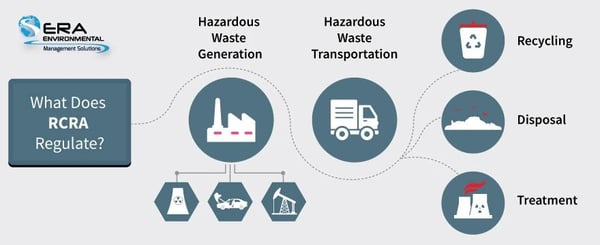
RCRA regulates the generation, transportation, storage, and disposal of solid hazardous waste. This law gives the EPA jurisdiction to control and monitor hazardous waste from the “cradle to the grave”. It has three major regulatory programs known as the Hazardous Waste Management Program (RCRA Subtitle C), Solid Waste Management Program (RCRA Subtitle D) and the Underground Storage Tank Program (RCRA Subtitle I):
- RCRA Subtitle C sets the national regulatory standards for hazardous waste management. It sets the criteria for hazardous waste generators and governs how states implement RCRA. Subtitle c also includes permit requirements, corrective action, or clean up to deal with waste that has been released to the environment.
- RCRA Subtitle D sets the national standards for solid waste management. This bans the open dumping of municipal waste and sets limits for industrial waste landfills including design, location restrictions. Subtitle D also includes financial assurance and closure requirements.
- RCRA Subtitle I monitor leaks from underground storage tanks to protect groundwater and bans the installation of unprotected steel tanks. It requires facilities that already own and operate underground tanks to perform effective leak prevention, detection, and release cleanup.
Who Enforces RCRA?
The EPA enforces RCRA through the laws mentioned above and various state regulations. RCRA is enforced using strict compliance monitoring and it delegates the monitoring responsibilities to the states and local authority. That is why knowing your state reporting requirements is essential for your hazardous waste reporting. Compliance monitoring involves facility inspections, reviewing records and potential enforcement action when needed. The focus aspects of compliance monitoring are shown in the image:
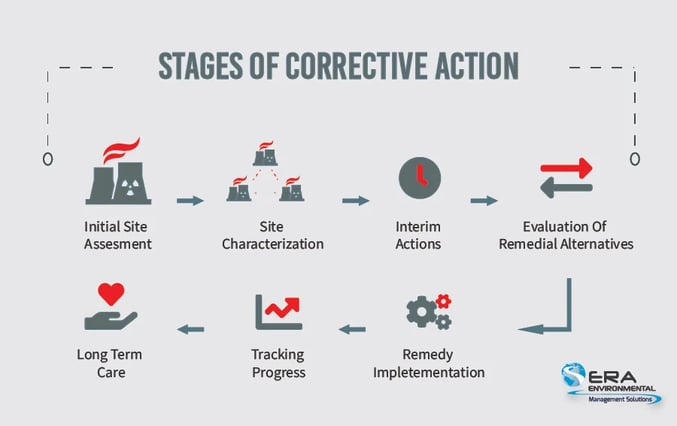
The Image does not include all of the factors and for more detailed information on these factors, you can read through the EPA’s extensive Compliance monitoring strategy.
What Does RCRA Nonhazardous Waste Mean?
Waste that poses a threat to human health is defined as hazardous. So how do you know if your waste is hazardous? According to RCRA, there are specific rules and guidelines that determine if your waste is hazardous. These include asking questions to see if your waste is a defined ‘solid waste’, checking if it is specifically listed as a hazardous waste or if it is excluded from RCRA regulations. A more detailed way of determining hazardous waste is outlined in ERA’s Hazardous waste blog article.
What Information is Collected Under RCRA? How is RCRA Enforced?
For such a vast-reaching regulation, it may be difficult to decipher the number of reports, permits, and forms required to stay in compliance. Multiple types of information are required for RCRA enforcement and implementation. The information collected and required by the EPA under RCRA includes information on Hazardous waste sites, the Biennial Report, Permitting, Corrective action, Financial Assurance and tracking shipments using e-Manifest. In this next section, we will break down all these aspects of RCRA and give you a few tips on how to complete some of these requirements.
Hazardous Waste Sites
Hazardous waste sites can be identified by site inspection. The inspections have rules that are followed before the site is categorized. There are five types of ownerships for hazardous waste sites and these govern who enforces laws on these sites and the types of permits required; the types are federal, state, tribal, local, and private. If the site has more than one ownership, then it can be regulated under the highest ownership available. Ownership also has different enforcement methods according to RCRA. These are listed below according to ownership:
- Federal sites must comply with the entire range of regulations from state, interstate to local solid hazardous waste requirements and storage tank requirements.
- States can implement and enforce RCRA programs. If the state is authorized, it may enforce RCRA and may use funds collected from violations for state-specific projects that protect the environment from further damage.
- Tribal - RCRA defines tribes as ‘municipalities’ and they can develop solid and hazardous waste schemes regarding their tribal law.
- Private. Citizens can file a suit against a federal agency if they violate any of the permits or regulations. They may also report the present handling, storage, treatment, disposal, or transportation of hazardous waste that can cause harm to human health or the environment.
Biennial Report
The Biennial Hazardous Waste Report is an essential part of RCRA enforcement. If you are a Large Quantity generator that treated, stored, or disposed of waste on-site, you must file this report every two years to report your hazardous materials and stay in compliance. More information about this can be found in our Biennial Waste Report Blog article that outlines everything you need to know about reporting your hazardous waste.
Permitting
RCRA can be enforced by the issuing of permits. RCRA permits are legally binding documents that establish a facility’s waste management activity requirements. Permits usually cover facility design, operation, and safety standards, it also describes the activities that the facility must perform, monitor, and report. Permits are an important part of the RCRA subtitle C program for TSFDs governed by the regulation 40 CFR Parts 124 and 270. RCRA permits are issued by the EPA and they give the facility owners the legal permission to treat, store, dispose of hazardous waste.
The permit is specific to a given site and can cover multiple units. Some activities don't require permits, such as facilities that store the waste for less than a specified time or facilities with enclosed treatment facilities among others. You will need to file a permit application to receive legal authority to process hazardous waste. You need to acquire your application 180 days before the construction of the facility begins. It takes one to five years for the permit to be issued so you must prepare for this well in advance. ERA can assist you with permit reviews by going through all your company documents with a fine-tooth comb to help you with your reporting and proving compliance to government agencies. The figure below shows the condensed steps required in permit applications from the EPA.
Corrective Action
Corrective action addresses the cleanup of hazardous waste releases. The vision of the RCRA corrective action plan is to “support healthy and sustainable communities where people are protected from hazard contamination”. It is the part of the regulation that addresses the cleanup of contamination at treatment, storage and disposal sites (TSD). The EPA has the right to order or compel your facility to clean up as a way of enforcing RCRA. Corrective action includes groundwater control, institutional control, engineering controls and permit tools. The steps for cleanup include initial site assessment, site characterization, interim actions, evaluation of remedial alternatives, and implementation of the selected remedy.
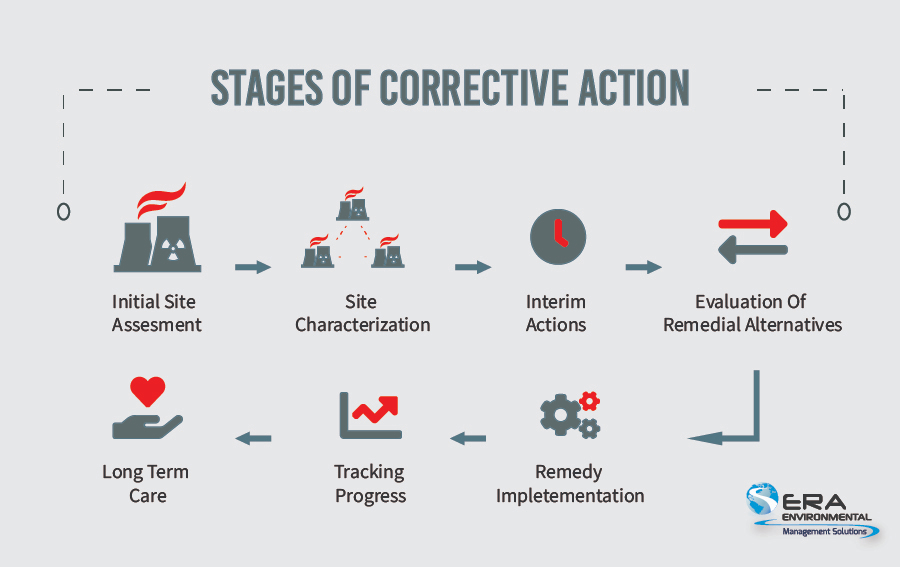
- Initial site Assessment. Some agencies conduct RCRA Facility assessments (RFA) which is the first step in corrective action. These agencies complete site assessments by collecting information on releases and potential releases and they determine if clean up is required.
- Site characterization. This is when the agency determines the extent and urgency of contamination on the site and decipher the types of remedies required. This step is known as the RCRA Facility Investigation (RFI). This step will clearly outline the chemical and physical properties of the hazardous material to check if they can either stop the hazardous chemical release or arrange a full range cleanup for the area.
- Interim actions: this is essential to carry out while the characterization is happening in case of an ongoing health risk. For example, if there is a leak into the drinking water supply, your facility must put in place a plan for an alternate water supply. The EPA has a guide to interim actions that you may find useful during your corrective action measures.
- Evaluation of remedial alternatives. This involves a Corrective Measures Study (CMS). It is when you assess your options before implementing solutions. The solution should be suitable for your facility's specific setup and conditions.
- Remedy implementation. This involves the design, construction, operation and maintenance of the chosen remedy. This is known as Corrective Measures Implementation (CMI).
- Tracking Progress. The corrective action will be monitored by the EPA until it is completed. Various milestones are tracked during the process to ensure that it is being implemented effectively.
- Long term care limits further exposure to hazardous waste within the facility. This will protect the facility from waste release long term. This includes employing administrative controls to ensure that the results of remedy are maintained. Long term care involves permits, zoning and other restrictions.
The EPA offers some training to further explain the steps in the RCRA Corrective Action Plan and they have detailed clear goals for 2030.
Financial Assurance
Financial assurance is the financial security to ensure that you can cover the cost of complying with environmental requirements. You should be able to demonstrate the ability to cover the cost of closure and post-closure corrective action annually. This does not require you to arrange a guarantee of payment or to show the funds in an account, but you are required to pass the financial test alternatives. These alternatives investigate the financial standing of your company including outstanding debts, revenue, how much money is being invested in short-term assets and bond ratings. For Hazardous Waste Treatment, Storage and Disposal Facilities(TFSDs) to pass these financial tests, your company must show that your company’s net worth is at least six times the estimated closure and post-closure costs.
This is a high priority report that is required by the EPA when enforcing RCRA. The report must be submitted within 90 days of the end of the fiscal year. Ensure that your company keeps comprehensive financial records to pass the financial test. The EPA has the right to ask you for extensive financial standing reports if they suspect that you do not meet the requirements. Here are some tips from the EPA for effective Financial Assurance implementations.
- Files. Keep original signed documents that will be needed for funding access, ensure you have all the documents required and keep them in a single location and submit the information to the RCRAInfo Always review these files each year.
- Always contact your financial institution to make sure that your funds are in place in case you need to access them.
- If you have insurance, you need to make sure that the certificate is signed so that you meet the regulatory requirements.
- Stay on top of the business press about your company because this could be used by the regulator to request additional financial information from you.
Overall, showing the funds required to cover closure and post-closure are required under RCRA.
The Hazardous Waste Electronic Manifest (e-Manifest)
The e-manifest is an electronic tracking system that tracks a hazardous waste shipment. It ensures efficient waste tracking by recording the type and quantity of waste that is being transported from the waste generating facility to the waste management facility. This system allows hazardous waste generators and transporters to digitally create, edit, and sign manifests while being able to easily access submitted manifests. The facilities that receive the waste can also sign receipt confirmation ERA Environmental offers with e-Manifest and ERA scientists can help you with this digital requirement.
The system also allows states and tribes to receive information and the public can easily view this data on the e-manifest website. When entering your shipment information, you must provide information on the type of waste that is produced and transported and enter various waste codes including the federal waste codes. E-Manifest fees are much less ($8 per manifest) than when you submit a paper manifest ($25 per manifest). The EPA hosts monthly e-manifest webinars where they share any information required and provide e-manifest training.
Submitting electronic manifests is not mandatory but it can save you both time and money. The e-manifest system has many benefits that include:
- Saving money on the user fees for the system.
- Improved accuracy and faster information submission for waste shipments.
- Prompt notification of discrepancies and/or problems related to any given shipment.
- An all-in-one system that can be used but the EPA and regulators to effectively track shipping data.
RCRA has many facets and reporting requirements. This article barely scratches the surface of these requirements. ERA’s team of scientists constantly study these regulations to effectively help your company with your reporting requirements. Here are some EPA resources that you can use to learn more about RCRA.
|
Resource Conservation and Recovery Act (RCRA) Compliance Monitoring |
https://www.epa.gov/compliance/resource-conservation-and-recovery-act-rcra-compliance-monitoring |
|
Best practices for compliance monitoring |
https://www.epa.gov/sites/production/files/2013-11/documents/rcracms.pdf |
|
Waste enforcement |
https://www.epa.gov/enforcement/waste-chemical-and-cleanup-enforcement#waste |
|
Land disposal restrictions |
https://www.epa.gov/hw/land-disposal-restrictions-hazardous-waste |
|
Corrective Action |
|
|
RCRAInfo |
https://rcrapublic.epa.gov/rcrainfoweb/action/main-menu/view |
|
E-manifest instructions |
https://www.epa.gov/sites/production/files/2020-04/documents/manifest_instructions_web.pdf |
|
Enforcement |
|
|
Financial Assurance |
|
|
Permitting |
https://www.epa.gov/sites/production/files/2015-09/documents/permits05.pdf |
Want some help understanding your RCRA requirements?
ERA's waste and chemical management advisors are here to help. Click the button below to schedule a free consulting call.
This Blog was Co-Authored By:


Tags:
Waste Management
February 3, 2021
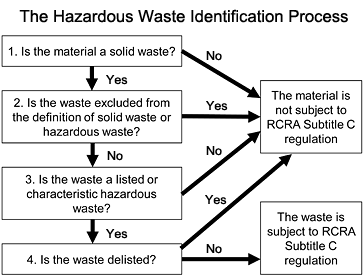
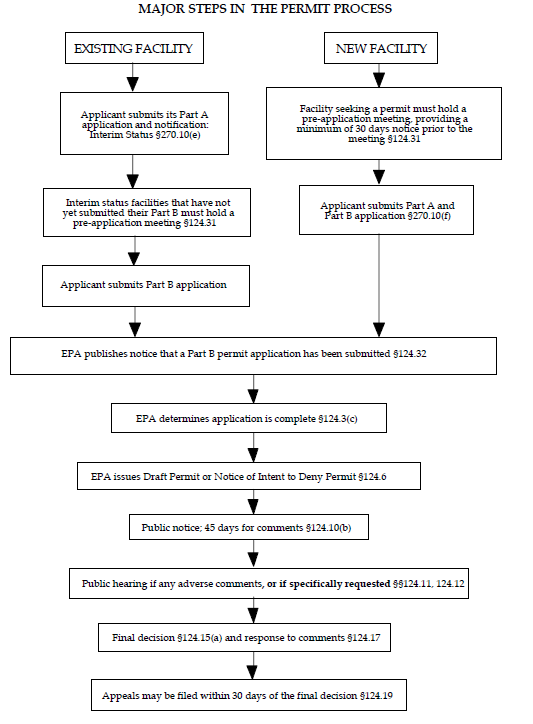

Comments